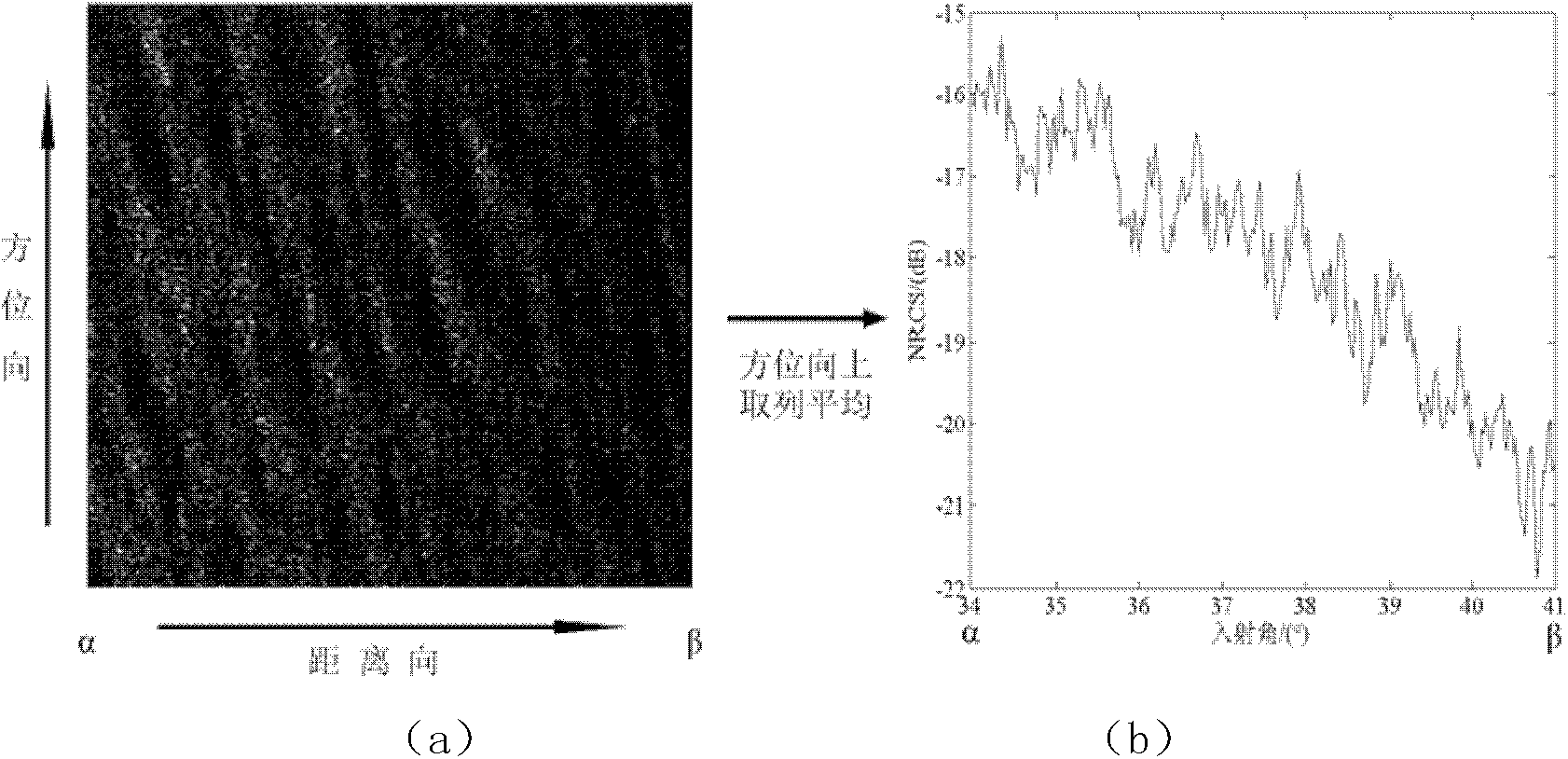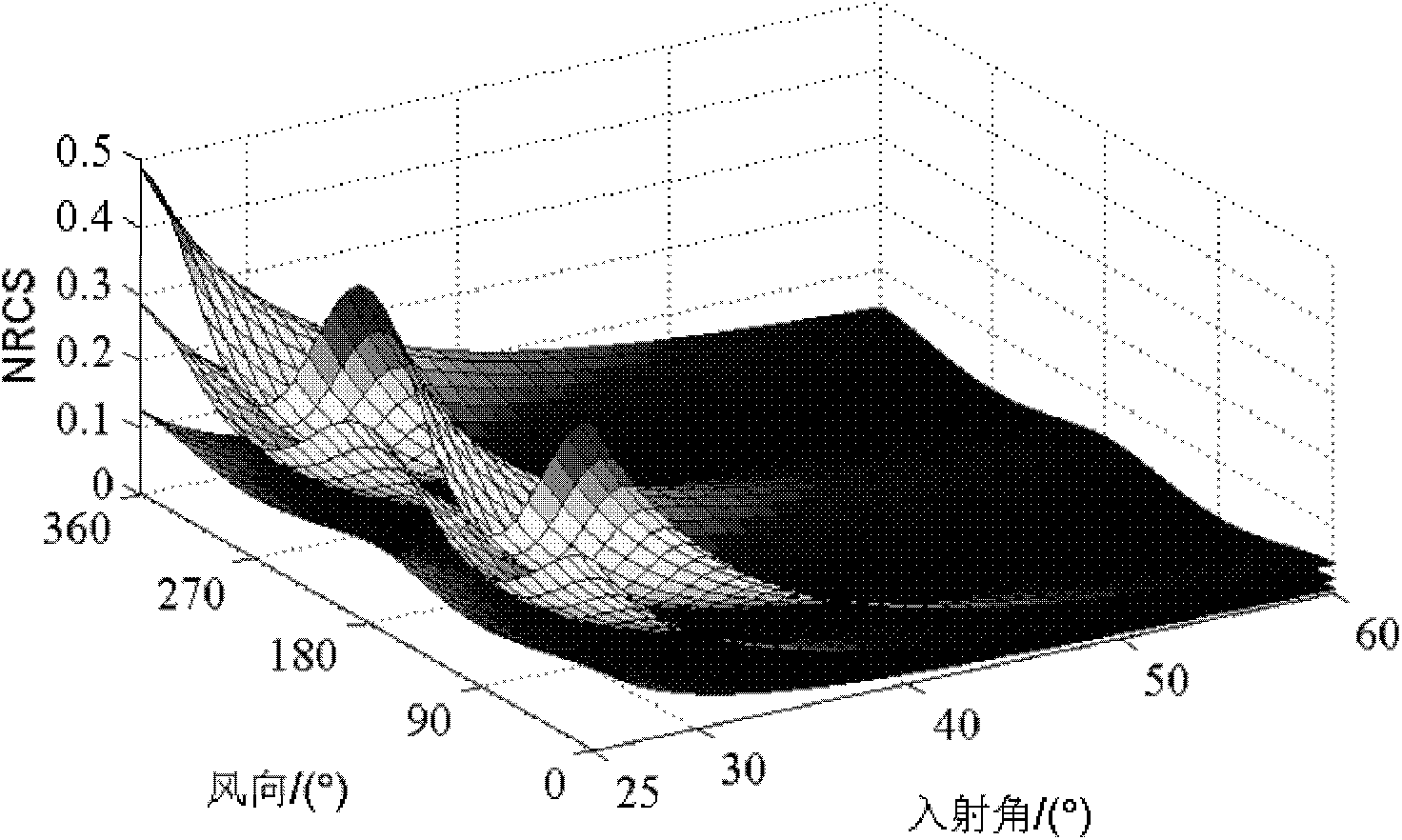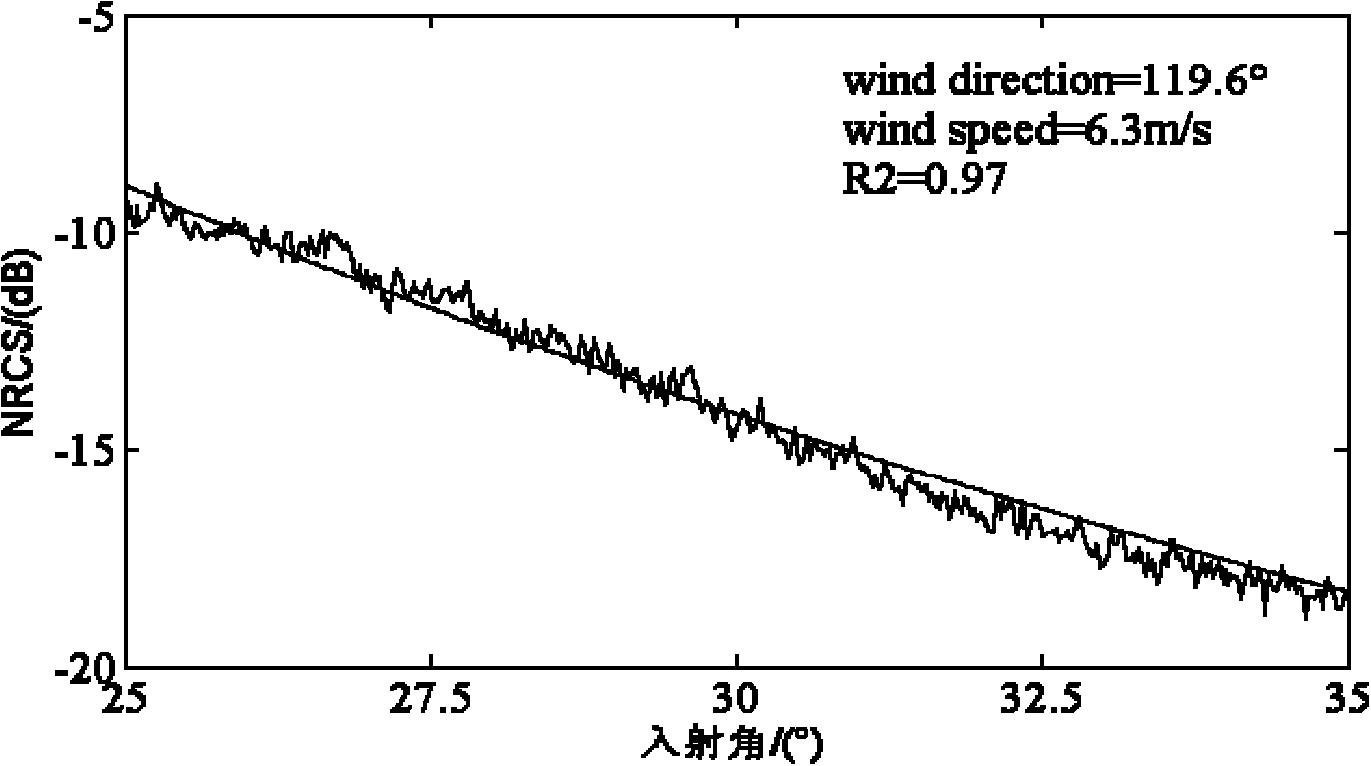Airborne synthetic aperture radar sea surface wind vector retrieval method
A synthetic aperture radar and wind vector technology, applied in the field of microwave remote sensing, can solve problems such as difficult commercial application, local optimal solution, influence of inversion accuracy, etc., and achieve the effect of facilitating commercial application
- Summary
- Abstract
- Description
- Claims
- Application Information
AI Technical Summary
Problems solved by technology
Method used
Image
Examples
Embodiment Construction
[0018] A kind of airborne synthetic aperture radar sea surface wind vector inversion method of the present invention comprises the following steps:
[0019] Step 1, data reading, read the airborne SAR detection image, and ensure that the read image does not contain marine environmental information such as internal waves, oil spills and ships;
[0020] Step 2. Determine the initial incident angle α and the cut-off incident angle β of the SAR image; the formula used to determine the initial incident angle α and the cut-off incident angle β of the SAR image is:
[0021] α = arccos ( H R )
[0022] β=α+θ
[0023] In the formula, H is the flying height of the carrier aircraft, R is the initial slant distance of the detection pulse, Among them, 0.886 is a constant determined by the phased array radar, λ is the radar wavelength, and d is the distance width of the a...
PUM
 Login to View More
Login to View More Abstract
Description
Claims
Application Information
 Login to View More
Login to View More - R&D
- Intellectual Property
- Life Sciences
- Materials
- Tech Scout
- Unparalleled Data Quality
- Higher Quality Content
- 60% Fewer Hallucinations
Browse by: Latest US Patents, China's latest patents, Technical Efficacy Thesaurus, Application Domain, Technology Topic, Popular Technical Reports.
© 2025 PatSnap. All rights reserved.Legal|Privacy policy|Modern Slavery Act Transparency Statement|Sitemap|About US| Contact US: help@patsnap.com



